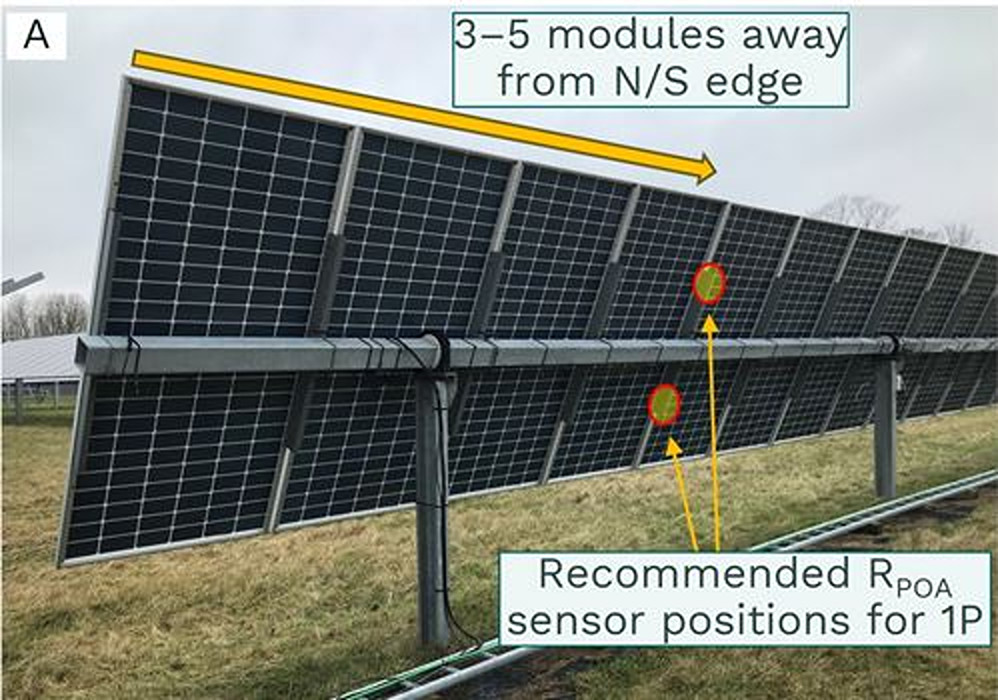Researchers in Denmark claim that they have identified the best locations for rear aircraft radiation sensors on the back of trackers with one axis in bifacial PV projects. Their work suggests how they can reduce the sensor quantities while maintaining accurate performance monitoring.
Researchers from the Danish PV project developer European Energy and the Technical University of Denmark have outlined a new method for REar of radiation monitoring bifacial photovoltaic systems that rely on trackers.
“The aim of the research was simply to find out where pyranometers on the back of bifacial tracking systems to place on utility scale, and how many pyranometers are needed to accurately measure the rear radiation,” said the research of the research, Nicholas Riedel-Lyngskær, said PV -Magazine. ‘This is important to know for accurate performance monitoring and PV plant acceptance tests. “
The scientists claim that they have identified the best locations for rear aircraft radiation sensors on the back of trackers with one axis in bifacial PV projects. ‘With RayTracing and some Veldvalidation we were able to make very specific recommendations for the placement and quantities of the rear pyranometer on 1P, 2P and 2P-GAP trackers, which means the most common, ”added Riedel-Lyngskær.
In the newspaper “Rear radiation monitoring on bifacial photovoltaic systems followed“Which was recently published in Solar energyThe research team explained that the PV industry has not yet identified the best practices to perform the radiation of the rear aircraft (RPOA). As a solution, it suggested simulating spatio-temporal light distributions at the back of large-scale single-axis trackers (SATs) projects in nine climates using the Open-source Python library bifacial look.
The Academics also noted that the IEC 61724-1 provisions for RPOA -best radiation measurements do not offer many details about sensor positioning, nor clarity about sensor quantities.
They used a High-Performance Computer (HPC) to perform RayTracing simulations per hour of existing Sat Bifacial PV projects at nine locations around the world: Accra, Ghana; Badajoz, Spain; Bandar Seri, Brunei; Charleville; Australia; Heilongjiang, China; Kastrup, Denmark; Minya, Egypt; Spring Lake, Canada; and Xinjiang, China.
For each sat type they have modeled a tracker system with five rows with each tracker having 22 modules in series. “This approach is informed by various seed arch bifacial simulation work that has demonstrated the middle module within a five-row system, approaches the irradiation received by a PV array of semi-infinite length,” De Paper notes.
RPOA existing radiation was simulated on 23 discreet points at the back of the middle module, with the analysis including 20 evenly divided points from east to west in the rear aircraft-of-Array (POA), one directly on the Torque Tube (TT) with the ground under the middle module and two in the northern and southern end of the tt.
The simulations showed that there is no position at the back of SATs that accurately correspond to the spatial average RPOA rays. The best single RPOA location turned out to have an average error of 7%, which were able to reduce the scientists to 2% due to average measurements on just two separate locations on the eastern/western sides of SATs.
“The addition of a third RPOA sensor in the average did not reduce the error, which suggests that future revisions of IEC 61724–1 RPOA sensor quantities must specify to scales a factor of two, instead of the current factor of three;” The research team emphasized and noted that the results only apply to SATs with a TT in line in the North-South direction. “Optimal sensor placement for equator-oriented fixed tilt, vertically mounted east-west or overhead agrivoltaic structures must be evaluated for the specific project and may be the subject of future work.”
According to Riedel-Lyngskær“ The IEC 61724-1 standard currently requires 33% more rear sensors than necessary to accurately check a PV factory. “Our recommendations lead to lower costs without endangering the accuracy of the rear radiation measurements,” he concluded. “The IEC 61724-1 project team has now invited me to work on the next edition of De Standaard, but we hope that the newspaper can support and harmonize guidelines in other solar-tracks related standards.”
This content is protected by copyright and may not be reused. If you want to work with us and reuse part of our content, please contact: editors@pv-magazine.com.

